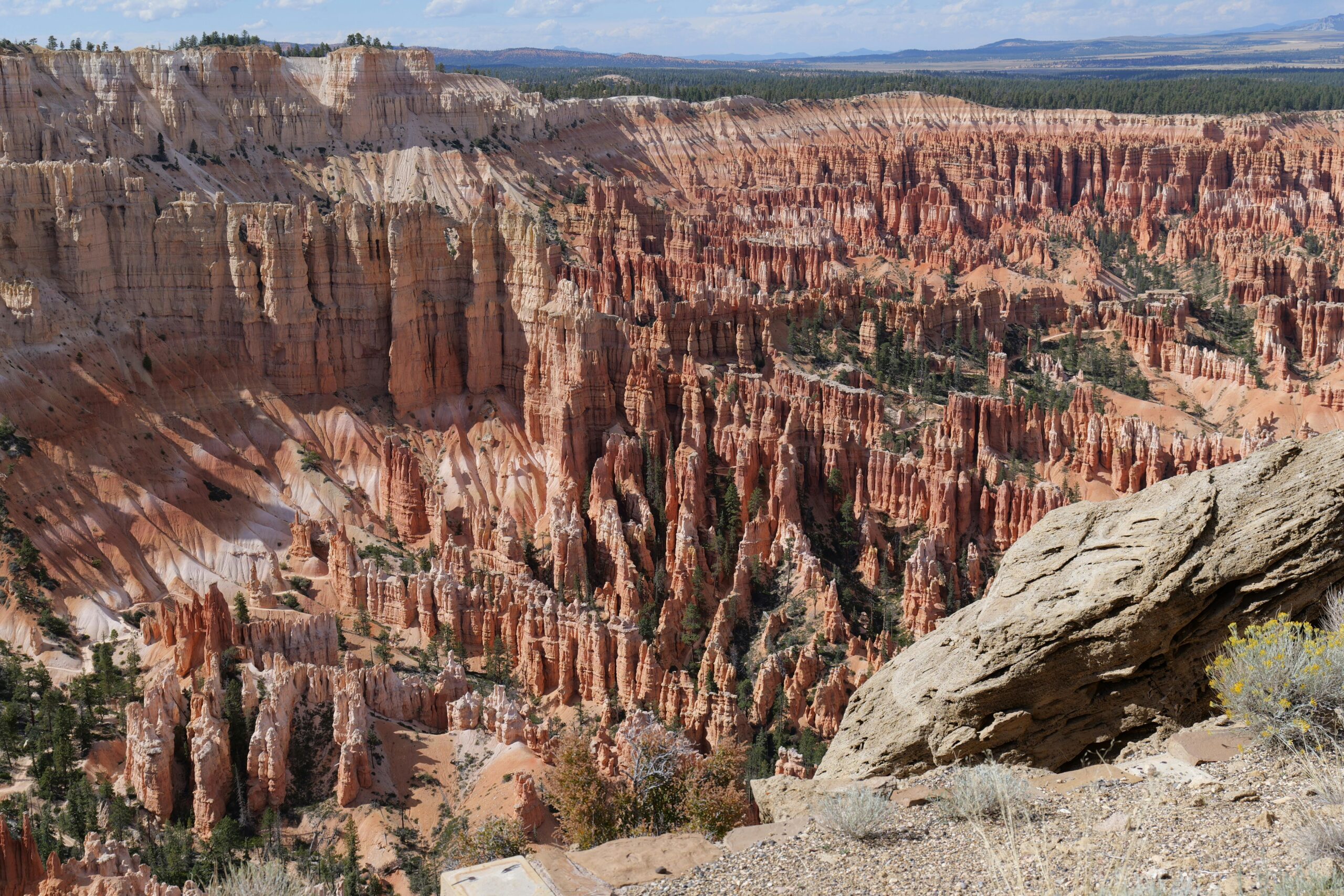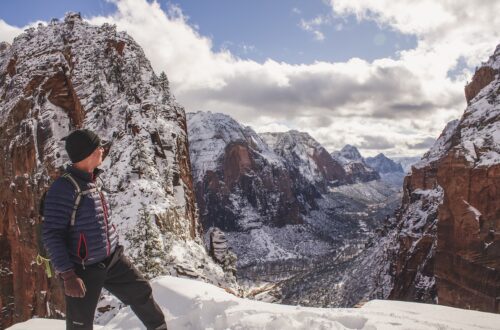
Canyonlands vs. Grand Canyon: Which is Better?
If you’re planning a trip to the American Southwest, you might find yourself grappling with a tough decision: Should you visit Canyonlands or the Grand Canyon? Both are iconic national parks, each offering unique landscapes and experiences that leave a lasting impression. While the Grand Canyon is arguably the more famous of the two, Canyonlands boasts its own breathtaking beauty and unparalleled adventure opportunities. This guide will help you decide whether to visit one, the other, or both, by exploring the highlights, differences, and must-see spots of each park.


| Feature | Canyonlands National Park | Grand Canyon National Park |
| Location | Southeast Utah, near Moab | Northern Arizona, with South Rim and North Rim |
| Size | 337,598 acres | 1,217,262 acres |
| Scenic Views | Unique rock formations, expansive canyons, and mesas | Iconic vast canyon views with steep cliffs and the Colorado River |
| Best for Hiking | Island in the Sky, Needles, and The Maze districts offer varied hiking experiences | South Rim: Bright Angel Trail, North Kaibab Trail, Rim Trail |
| Accessibility | More remote and rugged, requires a car or 4×4 for full exploration | South Rim is easily accessible; North Rim is more remote |
| Activities | Hiking, mountain biking, 4×4 driving, photography, stargazing | Hiking, rafting, mule rides, helicopter tours, scenic train rides |
| Crowd Levels | Less crowded, especially in The Maze district | South Rim: Very crowded; North Rim: Less crowded |
| Best Time to Visit | Spring and fall for moderate temperatures | Spring, summer, and fall; North Rim closed in winter |
| Nearby Towns | Moab, Utah | Tusayan, Arizona; Williams, Arizona; Flagstaff, Arizona |
| Accommodation Options | Moab (hotels, motels, campgrounds), RV rentals, backcountry camping | South Rim (lodges, hotels), North Rim (lodges, cabins), campgrounds |
| Unique Features | Diverse districts with different landscapes; excellent for solitude and adventure | Iconic, world-famous views; more developed tourist infrastructure |
| Family-Friendliness | Suitable for adventurous families; less developed trails | Very family-friendly with easy trails and multiple visitor services |
| Travel Considerations | Requires planning for remote areas, 4×4 recommended for The Maze | Easily accessible, especially the South Rim; shuttle services available |

Overview of Canyonlands National Park
Canyonlands National Park, located in southeastern Utah, is a sprawling landscape of canyons, mesas, and buttes carved by the Colorado River and its tributaries. The park is divided into four districts: Island in the Sky, The Needles, The Maze, and the rivers themselves. Each district offers its own unique experience, making Canyonlands a diverse and multifaceted destination. Visitors can enjoy scenic drives, challenging hikes, and a variety of outdoor activities, all while soaking in the park’s rugged beauty. The park is less crowded than the Grand Canyon, providing a more serene experience for those looking to escape the hustle and bustle of more popular national parks.

Overview of Grand Canyon National Park
The Grand Canyon needs little introduction. Located in northern Arizona, this iconic landmark is one of the Seven Natural Wonders of the World. The park is divided into the South Rim, North Rim, and the less-visited Grand Canyon West. The South Rim is the most accessible and popular, offering stunning panoramic views, numerous hiking trails, and educational opportunities at the Grand Canyon Visitor Center. The North Rim, higher in elevation and more remote, offers a quieter experience with equally spectacular views. The Grand Canyon is a place of immense beauty and awe, where the sheer scale of the landscape is almost impossible to comprehend.



Scenery: Majestic Vistas vs. Diverse Landscapes
When it comes to scenery, both parks offer breathtaking views, but in different ways. The Grand Canyon is famous for its immense scale and the dramatic way the Colorado River has carved out a chasm nearly 6,000 feet deep. The canyon’s layered bands of red rock reveal millions of years of geological history, making it a paradise for geology enthusiasts and photographers alike. Sunrises and sunsets at the Grand Canyon are unforgettable, as the light dances across the canyon walls, changing colors and creating a truly magical atmosphere.
Canyonlands, on the other hand, offers a more varied landscape. In addition to deep canyons, the park features towering mesas, expansive plateaus, and intricate rock formations. The Island in the Sky district provides stunning overlooks where visitors can gaze down at the canyons below, while The Needles district offers colorful spires and towering rock pinnacles that seem to reach for the sky. The Maze, one of the most remote and least visited areas, is a labyrinth of canyons that offers solitude and adventure for those willing to venture off the beaten path.



Accessibility: Easier Access vs. Off-the-Beaten-Path Adventure
Accessibility is another key factor to consider when choosing between Canyonlands and the Grand Canyon. The Grand Canyon’s South Rim is easily accessible by car and offers a wide range of accommodations, from campgrounds to luxury lodges. The park is well-equipped with visitor centers, restaurants, and shuttle services, making it a convenient option for families and those with limited mobility. However, the ease of access also means that the South Rim can be crowded, especially during peak tourist season.
Canyonlands, while still accessible, offers a more off-the-beaten-path experience. The Island in the Sky district is the most accessible, with paved roads and well-maintained trails. The Needles district requires a bit more effort to reach, and The Maze is one of the most remote areas in the entire National Park System, requiring 4WD vehicles and backcountry permits. This remoteness means fewer crowds and a more rugged experience, ideal for those looking to get away from it all.




Hiking: Iconic Trails vs. Secluded Adventures
Hiking is one of the main draws of both Canyonlands and the Grand Canyon, but the experience varies greatly between the two parks. The Grand Canyon offers some of the most famous hikes in the world, such as the Bright Angel Trail and the South Kaibab Trail. These trails take hikers down into the canyon, offering incredible views and a sense of accomplishment as you descend deeper into the earth. The Rim-to-Rim hike, which traverses the canyon from the North Rim to the South Rim, is a bucket-list adventure for many hikers.
Canyonlands, in contrast, offers a more varied hiking experience. The park’s trails range from short, easy walks to challenging backcountry routes. The Island in the Sky district features hikes to stunning overlooks, such as the Mesa Arch and the Grand View Point. The Needles district offers longer, more strenuous hikes through colorful rock formations and narrow canyons. For the truly adventurous, The Maze district provides a challenging and remote hiking experience that few people ever get to experience. Whether you’re looking for a quick stroll or a multi-day backpacking trip, Canyonlands has something for every type of hiker.



Crowds: Popular Landmark vs. Peaceful Solitude
One of the biggest differences between Canyonlands and the Grand Canyon is the level of crowds. The Grand Canyon, particularly the South Rim, is one of the most visited national parks in the United States, attracting millions of visitors each year. This can lead to crowded viewpoints, busy trails, and difficulty securing accommodations during peak season. While the North Rim is less crowded, it still sees a fair amount of visitors during the summer months.
Canyonlands, on the other hand, offers a much quieter experience. While the Island in the Sky district does see visitors, especially near popular viewpoints like Mesa Arch, the park’s other districts are far less crowded. The Needles district sees fewer visitors due to its remote location, and The Maze is one of the least visited areas in the entire National Park System. If you’re looking for solitude and a more peaceful experience, Canyonlands is the better choice.

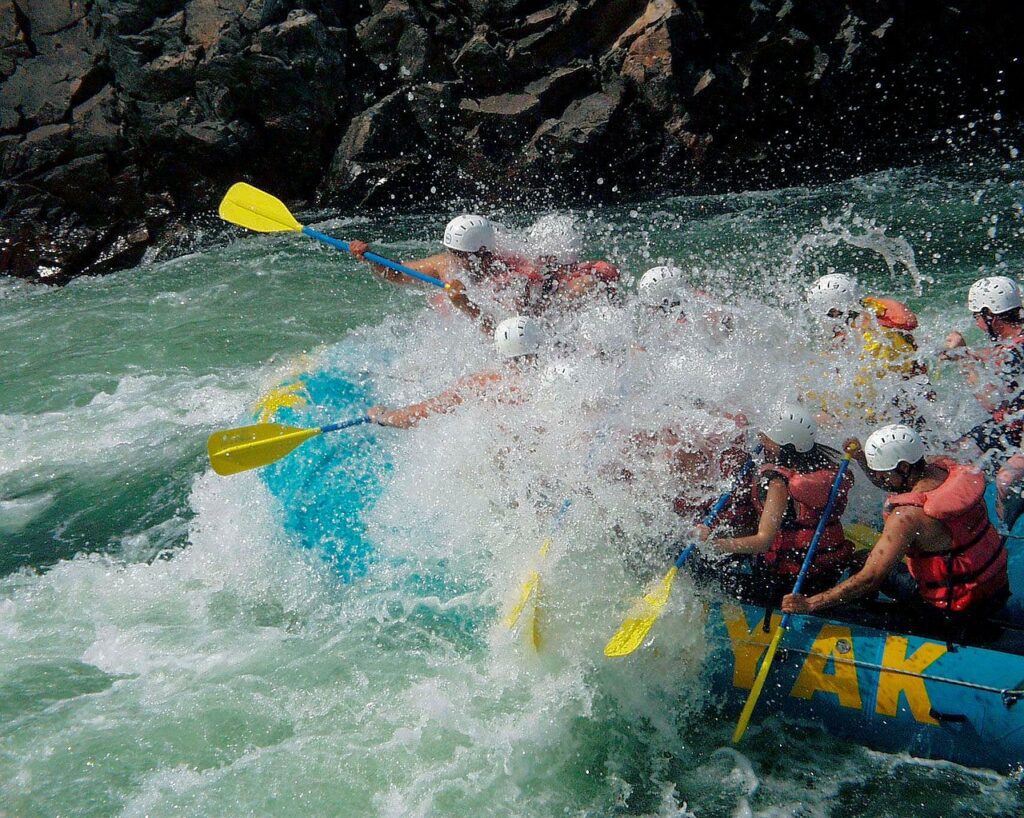




Activities: River Rafting vs. Jeep Tours
Both Canyonlands and the Grand Canyon offer a variety of activities beyond hiking, but the types of activities differ due to the parks’ unique landscapes. The Grand Canyon is famous for its river rafting trips down the Colorado River. These trips range from single-day excursions to multi-day adventures, offering a unique perspective of the canyon from the water. Other popular activities include mule rides, helicopter tours, and stargazing.
In Canyonlands, the rugged terrain makes it a prime destination for off-road adventures. Jeep tours and 4WD excursions are popular in The Needles and The Maze districts, allowing visitors to explore areas that are otherwise inaccessible. The park is also a haven for mountain biking, with the famous White Rim Road offering a challenging and scenic ride through the Island in the Sky district. Like the Grand Canyon, Canyonlands also offers river rafting trips, though they are typically less crowded and more remote.



Wildlife: Desert Creatures vs. Diverse Ecosystems
Wildlife enthusiasts will find plenty to enjoy in both Canyonlands and the Grand Canyon, though the types of animals you’re likely to see vary between the two parks. The Grand Canyon is home to a diverse range of species, thanks to its varying elevations and ecosystems. Visitors may spot California condors soaring above the canyon, mule deer grazing near the rim, and even the occasional mountain lion or bobcat. The park is also home to a variety of reptiles, including rattlesnakes and Gila monsters.
Canyonlands, while less diverse, offers its own unique wildlife viewing opportunities. The park is home to desert-dwelling creatures such as bighorn sheep, coyotes, and kangaroo rats. Birdwatchers will enjoy spotting golden eagles, peregrine falcons, and a variety of other raptors soaring above the canyons. The remote and rugged nature of Canyonlands means that wildlife sightings are often more of a solitary experience, adding to the park’s sense of wilderness and adventure.



Geological Significance: Ancient Layers vs. Erosion Wonder
Both Canyonlands and the Grand Canyon offer a fascinating glimpse into the geological history of the earth, but the story each park tells is different. The Grand Canyon is a geologist’s dream, with its exposed rock layers revealing over two billion years of earth’s history. The canyon’s formation is a result of millions of years of erosion by the Colorado River, and the visible strata provide a timeline of the geological events that shaped the region.
Canyonlands, while also shaped by the Colorado River, tells a different geological story. The park’s landscape is the result of both erosion and tectonic activity, with its dramatic canyons, mesas, and buttes offering a glimpse into the forces that have shaped the American Southwest. The park is also home to unique geological features such as the Upheaval Dome, a mysterious crater that has puzzled scientists for decades. Whether you’re a geology enthusiast or simply appreciate stunning landscapes, both parks offer a wealth of geological wonders to explore.







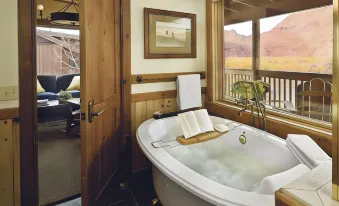

Where to Stay: Accommodations Near Canyonlands and the Grand Canyon
When visiting Canyonlands National Park, Moab, Utah, is the most popular base for accommodations. Moab offers a variety of lodging options, from luxury resorts like Sorrel River Ranch Resort & Spa to more budget-friendly choices like Moab Valley Inn. If you’re looking for a more immersive experience, consider booking a stay at one of the many campgrounds within or near the park, such as Willow Flat Campground in the Island in the Sky district. For those who prefer something in between, RV rentals are available and provide a comfortable way to stay close to nature while still enjoying modern amenities.
For the Grand Canyon, the South Rim offers the most extensive range of accommodations. You can stay inside the park at iconic lodges like El Tovar Hotel or Bright Angel Lodge, both of which offer stunning views and convenient access to the canyon’s main attractions. If you prefer to stay outside the park, Tusayan, located just a few miles from the South Rim entrance, has several hotels ranging from the luxurious The Grand Hotel to more affordable options like Holiday Inn Express. For those exploring the North Rim, accommodations are more limited, but Grand Canyon Lodge North Rim offers the most convenient and scenic option.









Things to Do: Must-See Attractions and Activities
In Canyonlands National Park, adventure awaits around every corner. The Island in the Sky district is famous for its breathtaking overlooks, like Mesa Arch and Grand View Point, where you can capture stunning sunrise photos. Hiking enthusiasts will enjoy trails like White Rim Overlook and Murphy Point. If you’re into mountain biking, the White Rim Road offers a challenging and unforgettable experience—bike rentals are available in Moab for your convenience. For those looking to explore the park’s rugged beauty, 4×4 rentals are highly recommended for navigating the backcountry roads in The Maze district.
At the Grand Canyon, the South Rim offers a range of activities, from walking along the Rim Trail to hiking down into the canyon via the Bright Angel Trail. For a truly unforgettable experience, consider booking a helicopter tour that offers a bird’s-eye view of the canyon’s immense scale. The Grand Canyon Railway is another popular attraction, providing a scenic and relaxing journey from Williams, Arizona, to the South Rim. If you’re staying at the North Rim, the Cape Royal Trail and Bright Angel Point are must-see spots, offering unparalleled views of the canyon and the Colorado River far below.
How to Get There: Navigating Your Way to Canyonlands and the Grand Canyon
Reaching Canyonlands National Park is easiest by car, with car rentals available in nearby Moab. The closest major airport is Salt Lake City International Airport (SLC), about a 4-hour drive from Moab. Alternatively, you can fly into Grand Junction Regional Airport (GJT), which is about 2 hours from Moab. Once in Moab, the park’s Island in the Sky district is just a 40-minute drive, while The Needles district is about 1.5 hours away. To explore the more remote Maze district, a high-clearance vehicle or 4×4 rental is essential.
For the Grand Canyon, the South Rim is the most accessible, with car rentals available from several nearby cities. The closest airport is Flagstaff Pulliam Airport (FLG), just a 1.5-hour drive away. If you’re coming from Las Vegas, McCarran International Airport (LAS) is about a 4.5-hour drive. Shuttle services also run from Flagstaff and Williams, offering a convenient way to reach the South Rim without a car. The North Rim is more remote, with the nearest airport, St. George Regional Airport (SGU), located about 3 hours away. A rental car is highly recommended for this journey, as public transportation options are limited.
Whether you’re planning a road trip or prefer flying in, both Canyonlands and the Grand Canyon are accessible and well worth the journey.
Best Time to Visit: Seasonal Considerations

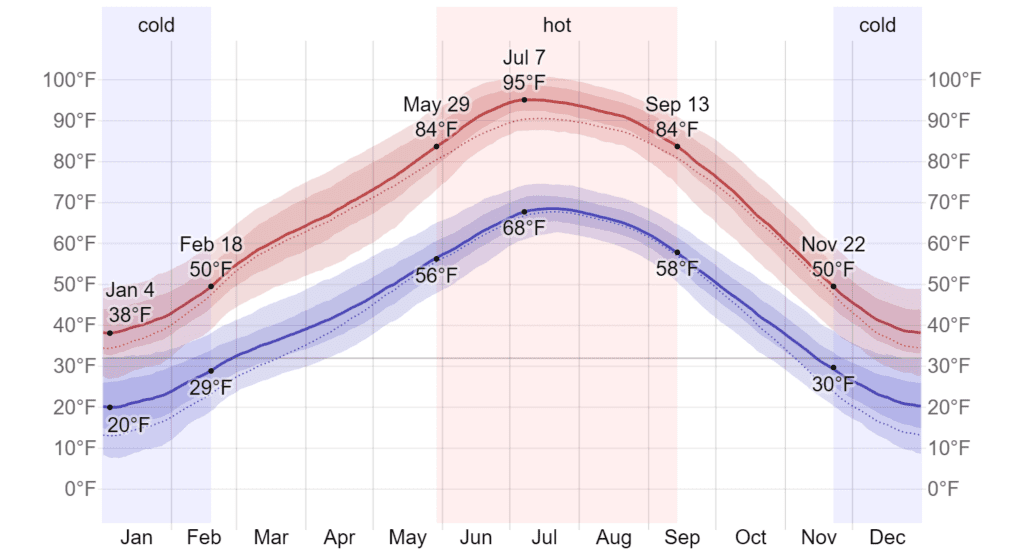

Choosing the best time to visit Canyonlands or the Grand Canyon depends on what you want to experience and your tolerance for crowds and weather conditions. The Grand Canyon is busiest during the summer months, particularly at the South Rim, where temperatures can soar above 100°F (38°C). However, the summer is also when the North Rim is open, offering cooler temperatures and fewer crowds. Spring and fall are ideal times to visit the Grand Canyon, with milder temperatures and fewer visitors.
Canyonlands, with its varying elevations and districts, can be visited year-round, though conditions vary. The Island in the Sky district is accessible in winter, but snow can make some roads and trails impassable. Spring and fall are the best times to visit, with comfortable temperatures and fewer crowds. The Needles and The Maze districts are best visited in spring and fall as well, as summer temperatures can be extreme, and winter conditions can make access difficult. If you’re looking to avoid the peak tourist season, visiting Canyonlands in the shoulder seasons is a great option.



Should You Visit One or Both?
Deciding between Canyonlands and the Grand Canyon ultimately comes down to what kind of experience you’re looking for. If you want to see one of the most famous natural wonders in the world, with iconic views and well-established tourist infrastructure, the Grand Canyon is the place to go. However, be prepared for crowds, especially at the South Rim.
If you’re seeking a more rugged, off-the-beaten-path adventure with diverse landscapes and fewer people, Canyonlands might be the better choice. With its varied districts and opportunities for solitude, Canyonlands offers a more intimate experience with nature.
For those with the time and desire to explore, visiting both parks is the ultimate Southwest adventure. Each park offers something unique, and together they provide a comprehensive experience of the region’s stunning natural beauty. Whether you choose one or both, you’re sure to come away with memories that will last a lifetime.




